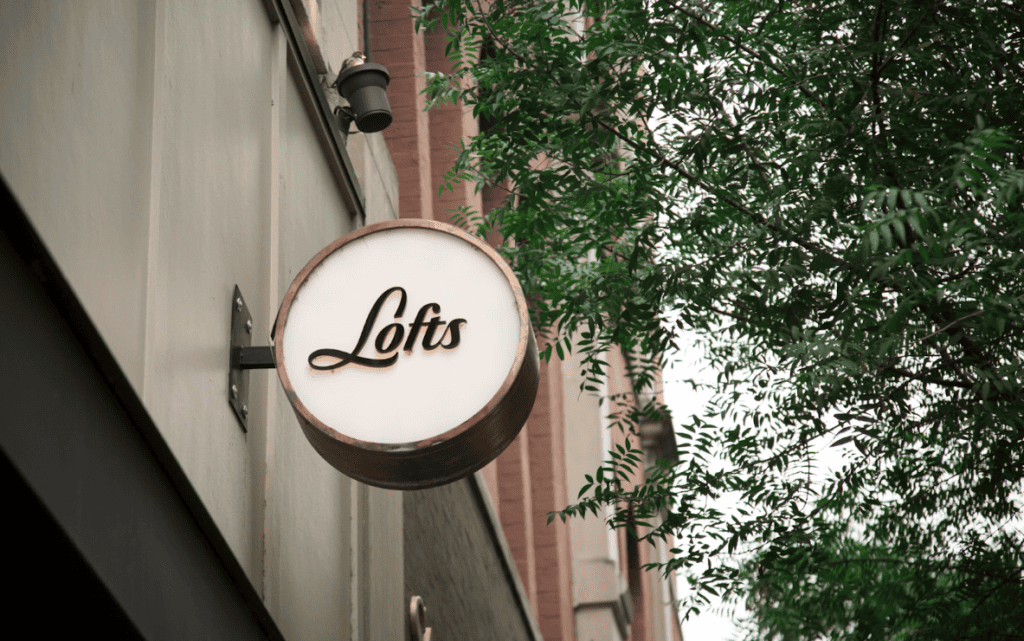Boosting the visibility and impact of your brand begins at the point of first contact with your audience. What better way to make a memorable first impression than with strategic, eye-catching signage?
Table of Contents
From storefronts and trade show displays to corporate office branding, well-crafted signage can solidify brand recognition and engagement. However, the often-underestimated linchpin in this engagement is the installation process itself.
Mastering the art of strategic signage installation can mean the difference between seamless brand messaging and a disjointed customer experience.

In this comprehensive guide, we will explore why signage installation is a crucial component of brand communication and how you can ensure expert execution for maximum brand elevation.
Understanding the Role of Signage in Branding
Before we dive into the nitty-gritty of signage installation, it's important to understand the role signage plays in your overall branding strategy. Signage is the physical representation of your brand, often the first sensory experience a customer has with your business.
It communicates your brand's personality, values, and offerings in a visual and sometimes tactile format. Your signage is your silent salesperson, active 24/7, and its effectiveness directly impacts your sales, customer perception, and brand longevity.

Effective signage reflects your brand's unique position in the market. It should capture attention, amplify your brand message, and guide customer behavior.
In brick-and-mortar locations, signage must perform these functions while harmonizing with the store's architecture and design. When designed and installed to align with these principles, signage becomes an integral part of the customer's overall brand experience.
Crafting the Right Signage Design
Signage efficacy starts with design. A well-thought-out design ensures that your signage is not just aesthetically pleasing, but also functional and on-brand. This begins with choosing the right materials, fonts, colors, and size that reflect your brand's identity and the environment in which the signage will be displayed.
It's essential to consider where the signage will live and who your target audience is, ensuring that the design speaks directly to them.
Ensuring your signage design is suitable for the purpose is key. A trade show booth may require vibrant, attention-grabbing designs, while office reception signage may need to radiate professionalism and trust.
Accessibility is also a vital aspect, especially for businesses looking to engage with all consumers, including those with disabilities. The Americans with Disabilities Act dictates various requirements for signage that can't be overlooked.
The Science of Placement and Visibility
Once your signage is designed, the next step is to place it strategically. The placement of your sign is a science in itself. Visibility studies, often conducted by professionals, can help determine the optimal height, size, and location of your signage.
For outdoor signs, elements like lighting, traffic flow, and zoning regulations come into play. Indoor signs must consider walking pattern analysis and architectural features that may obstruct the view.
Properly placed signage guides the customer seamlessly through their experience with your brand. It should be informative without being overwhelming and, above all, visible.
Nobody should have to squint or strain to read your sign, which means text size and color contrast are critical components of placement. A professional touch is often needed to bring together all these elements seamlessly.
The Technical Art of Signage Installation
The actual installation of signage is where the design, material, and placement theories come to life. It's a moment of truth for your branding efforts.
The technical aspect of installation involves making sure the sign is mounted securely, within safety guidelines, and is level and straight. It has to weather future elements, whether that's sunlight, rain, or simply the busy foot traffic of a store.
Installers must be trained to work with various materials and should have a strong understanding of the building or trade industry, depending on the complexity of the signage. This also includes knowledge and adherence to local regulations, like the permitting process, to avoid any hiccups or fines.
Lastly, a keen eye for detail and aesthetics is crucial to ensure the final product is not only functional but also a thing of beauty.
Choosing the Right Manufacturer and Installer
Selecting the right company to manufacture and install your signage is a pivotal decision. Research is key. Look for companies with a solid track record and a portfolio that demonstrates expertise in similar projects.
Ask for referrals and testimonials to gauge customer satisfaction. It's also vital to choose a manufacturer and installer with experience in your specific industry. Different sectors, from healthcare to retail, have unique requirements for signage.
Additionally, inquire about the installer’s qualification and certification programs. Are they regularly trained on new materials and techniques? Do they follow industry best practices and safety standards? The right company should be a partner in your brand's aesthetic success, offering insights and support from the design phase to maintenance.
Maintaining Your Signage for Longevity
Signage installation is not a one-and-done event; it requires ongoing maintenance to continue to enhance your brand. Regular cleaning and inspection are essential to ensure your signs remain in top condition.
Maintenance also provides an opportunity to evaluate if your signage needs updating to reflect any changes in your company's offerings or brand message.
Long-term partnerships with installation companies can often include maintenance contracts, making this process simpler and more cost-effective. The goal is for your signage to be as durable as it is captivating—a well-maintained sign is a testament to a brand's commitment to quality and attention to detail.
Overcoming Common Installation Challenges
Even with the best-laid plans, challenges can unexpectedly arise during the installation process, putting a strain on timelines and resources. Weather delays, unanticipated building issues like structural complications or material shortages, or supplier problems might crop up, demanding immediate attention and resolution.
The key to successfully navigating through these hurdles is to proactively establish comprehensive contingency plans and ensure that there are clear channels of communication among all stakeholders involved.
By fostering transparent and effective communication, potential roadblocks can be swiftly identified and addressed, preventing minor setbacks from escalating into larger issues.
Moreover, engaging a seasoned project manager with a proven track record of handling such complexities can significantly contribute to streamlining operations and mitigating risks. Their expertise and strategic oversight can help anticipate challenges, implement proactive solutions, and maintain project momentum.
Metrics and Evaluation: How Do You Know Your Signage Works?
Finally, when evaluating the success of your signage investment, it's crucial to consider a diverse range of metrics. Look beyond just foot traffic patterns and sales data; delve into customer feedback and social media engagement to gain a comprehensive understanding of the impact.
These various indicators not only reveal the ROI of your signage but also offer valuable insights into your overarching brand strategy. Remember, investing in signage is a strategic choice that contributes to your brand's visual identity in the long run.
While immediate results matter, the true value lies in creating a consistent, memorable, and meaningful brand experience that resonates with your audience over time.
When to Renovate or Replace Your Signage
Your business and brand continually evolve in response to dynamic market trends and customer preferences. It's vital to recognize when your signage needs updating to align with these changes. This could stem from a strategic rebranding initiative, a pivot in business direction, or even the natural effects of time and exposure.
Monitoring customer feedback and staying abreast of market shifts is key. Evaluate if your current signage still resonates with your intended audience or if it's starting to show signs of aging.
Regular assessments of your signage's impact enable informed decisions, safeguarding the relevance and vitality of your brand identity. By proactively engaging in these practices, you can uphold a contemporary and captivating brand image.
The Future of Signage: Trends and Innovations
As technology evolves, so too does the landscape of signage. Digital signage is leading the charge, offering dynamic, interactive experiences for customers. These digital displays can change content quickly, allowing for timely and relevant messaging.
Augmented Reality (AR) and Virtual Reality (VR) are also beginning to make their mark in the signage world, enhancing customer engagement through immersive experiences.
Furthermore, sustainability is becoming a crucial consideration, with companies increasingly opting for eco-friendly materials and energy-efficient LED lighting. The future of signage lies in blending creativity with technology, ensuring brands not only capture attention but also connect with their audience on a deeper level.

Strategic signage installation is a powerful tool in building and maintaining a strong brand presence. By investing in design, placement, installation expertise, and ongoing maintenance, you ensure that your signage not only captures attention but also retains it.
Professional installation brings your design to life and demonstrates a commitment to quality that resonates with customers. Remember, your signage is not just a piece of your brand—it's an interactive component that shapes the overall customer experience.
Start mastering the art of signage installation today, and watch as your brand reaches new heights of recognition and success.
Signage Mastery – FAQs
What are the key factors to consider when designing my signage?
When designing signage, consider factors such as brand identity (colors, fonts, logos), the messaging goal (what you want to communicate), the physical environment where the signage will be placed (indoor, outdoor, lighting conditions), and compliance with local laws and regulations, including the Americans with Disabilities Act for accessibility.
How often should signage be updated or replaced?
This depends on several factors including wear and tear, brand updates, and changes in business direction or customer base. In general, evaluate your signage at least once every 3-5 years to ensure it remains effective and aligned with your brand strategy. However, digital signage content may need more frequent updates to stay relevant.
Can I install my own signage to save costs?
While self-installation might seem like a cost-saving option, professional installation ensures that your signage is safely and securely mounted, compliant with local regulations, and placed for optimal visibility and durability. Investing in professional installation can prevent future costs associated with repairs, replacements, or legal issues.
How can I ensure my signage stands out in a crowded marketplace?
To ensure your signage stands out, focus on unique design elements that reflect your brand, use high-contrast colors and readable fonts for clarity, and consider innovative technologies like digital displays or interactive elements. Additionally, placing your signage strategically where it can catch the most attention will enhance its visibility.
Is digital signage worth the investment?
Digital signage often represents a higher upfront investment than traditional signage. However, its flexibility, dynamic content capabilities, and potential for interactive engagement can offer a significant return on investment.
Digital signage is particularly valuable for businesses that frequently update their messaging or want to leverage time-sensitive promotions.



